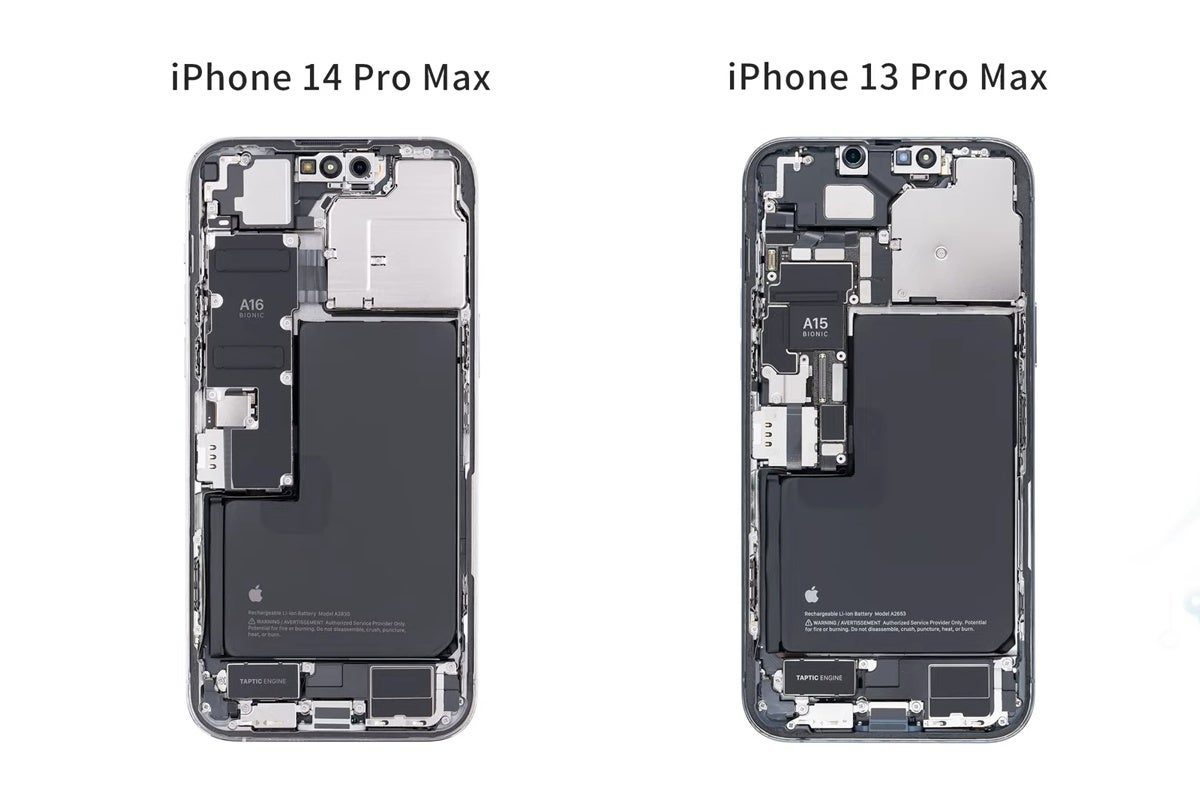Apple feels the need for speed, upgrading the iPhone 14 Pro and Pro Max in two big ways
SEP 16, 2022,

Today is a big day for hardcore Apple fans around the world… as well as for tech bloggers and journalists, with the actual release of the highly anticipated iPhone 14, 14 Plus, 14 Pro, and 14 Pro Max offering us the opportunity to fill in the remaining blanks of the four new devices’ spec sheets.
Of course, most of the key specifications have stopped being a secret long before the official announcement of the iOS-powered high-end quartet, but in keeping with tradition, a number of smaller details were not shared on stage at the September 7 launch event or on Apple’s website afterwards.
“Small” doesn’t equal trivial in this case, mind you, as things like RAM counts and battery capacities would often be highlighted as major selling points by some Android smartphone manufacturers. Upon exploring the internal components even closer, a WekiHome teardown specialist over in China was able to confirm another two small but potentially important details about both the iPhone 14 Pro and iPhone 14 Pro Max.
All you need is speed
Still upset that the 8GB memory gossip from a while back did not materialize in the end? You might want to turn that frown upside down now that the other RAM-related iPhone 14 Pro rumor is corroborated under the hood of a commercial unit.

The ultra-high-end handset’s 6 gigs of memory is confirmed to be using state-of-the-art LPDDR5 technology, up from the LPDDR4X standard of last year’s entire iPhone 13 family. Simply put, this means that iPhone 14 Pro (and 14 Pro Max) owners should notice a potentially significant increase in speed compared to Apple’s previous-gen flagships and most likely the iPhone 14 and 14 Plus as well.
That’s in addition to the performance enhancements enabled by the super-advanced A16 Bionic processor, labeled by its Cupertino-based makers as the “fastest chip ever in a smartphone”, presumably without taking the aforementioned memory upgrade into consideration.
LPDDR5, of course, is also used on essentially all of the best Android phones available today, and before long, the likes of Samsung, Motorola, and OnePlus should be able to take memory speeds to yet another level by adopting next-gen LPDDR5X technology.
That basically means that Apple is constantly one (half) step behind its competition in this field, although you’d never suspect that by your day-to-day iOS multitasking experiences, which are always pretty much flawless.
And even more speed
This time, we’re talking data speeds, upgraded across the iPhone 14 lineup with a Qualcomm Snapdragon X65 modem. For now, this is only confirmed to reside inside the Pro and Pro Max variants mentioned above, but we really don’t expect any compromise from the “vanilla” and Plus models in this particular department.

Compared to the Snapdragon X60 powering the iPhone 13, 13 mini, 13 Pro, and 13 Pro Max, the hot new cellular modem should vastly improve 5G speeds (with the help of your carrier) while reducing energy consumption and thus also contributing to a battery life bump… of some sort.
It almost goes without saying that the X65 is only a brand-new modem for Apple, having already found its way inside more Android high-enders than we can count as part of Qualcomm’s Snapdragon 8 Gen 1 and 8+ Gen 1 SoCs.
We also fully expect the Snapdragon 8 Gen 2 processor to make the leap to an even better X70 5G modem in time for Samsung’s Galaxy S23 series release early next year. But that’s certainly not going to stop Apple from selling a truckload of iPhone 14 units until then… and well beyond that point, as many of its loyal buyers only care if these bad boys are better than their forerunners, which they most definitely are.

